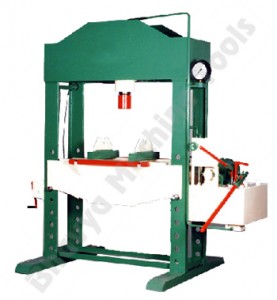 Sheet metal is basically a large metal sheet that is shaped into small, thin and flat pieces. Different types of metals such as steel, brass, aluminum, copper, etc. can be formed into sheet metal of varying thickness. Very thin pieces of sheet metal are called as foils/leafs; whereas the thicker pieces are known as plates. Sheet metals can be cut and bent into various shapes such as flat sheets or spiral coils using sheet metal machinery.
Sheet metal is basically a large metal sheet that is shaped into small, thin and flat pieces. Different types of metals such as steel, brass, aluminum, copper, etc. can be formed into sheet metal of varying thickness. Very thin pieces of sheet metal are called as foils/leafs; whereas the thicker pieces are known as plates. Sheet metals can be cut and bent into various shapes such as flat sheets or spiral coils using sheet metal machinery.
Applications of Sheet Metal Machines
Sheet metal machines are commonly utilized in several industrial segments to manufacture a wide range of machinery parts, steel metal components, stainless steel sheet metal pieces, metal assemblies etc. Hence sheet metal machinery is considered as one of the best machine tools. Simple hand tools or complex power operated automatic machines are used produce sheet metal.
Various Tasks Performed by Sheet Metal Machines
 The various tasks performed by versatile sheet metal machines include stretching, stamping, cutting, bending, shearing, deep drawing, perforating, deburring, spinning, roll forming, press brake forming, rolling, ironing, decambering, wheeling etc. The hydraulic press sheet metal machines and tools are used for stretching the sheet metal to make it straight and flat. This is done by using a grip at either side of the sheet to pull it beyond its elastic limit.
The various tasks performed by versatile sheet metal machines include stretching, stamping, cutting, bending, shearing, deep drawing, perforating, deburring, spinning, roll forming, press brake forming, rolling, ironing, decambering, wheeling etc. The hydraulic press sheet metal machines and tools are used for stretching the sheet metal to make it straight and flat. This is done by using a grip at either side of the sheet to pull it beyond its elastic limit.
The stamping process involves pressing the metal into a pre-determined shape. It includes one or more stamping stations in order to execute different operations on the metal sheet for creating the finished product. The metal sheet is passed through a series of steps to alter its shape by cutting, forming or drawing the work piece.
Methods of Cutting Sheet Metal
Sheet metal can be cut by applying different methods that includes cutting the sheet manually or by implementing computer controlled laser cutting techniques. Cutting large metal sheets manually is difficult as the sheet may bend. Computer aided laser cutting is more precise and reliable. The laser cutting method focuses a beam of laser light over the sheet metal in order to heat and subsequently burn the metal. Laser cutting is easier and faster; it delivers sheet metals with smooth edges and also minimizes wastage.
 Sheet metal machines and tools also help to shear the sheet metal to achieve the predetermined size. Bending is accomplished by shaping the metal sheet into diverse forms. The different types of press brakes are utilized for bending the sheet metal into the desired shape using a die set. The shearing process incorporates cutting extra large sheet metals into smaller sheets of required dimensions. Shearing should be done before stamping the metal sheet. It utilizes shearing force to cut the metal sheets. The sheet metal is kept between two blades that are forced against each other to produce straight line cuts.
Sheet metal machines and tools also help to shear the sheet metal to achieve the predetermined size. Bending is accomplished by shaping the metal sheet into diverse forms. The different types of press brakes are utilized for bending the sheet metal into the desired shape using a die set. The shearing process incorporates cutting extra large sheet metals into smaller sheets of required dimensions. Shearing should be done before stamping the metal sheet. It utilizes shearing force to cut the metal sheets. The sheet metal is kept between two blades that are forced against each other to produce straight line cuts.
The Bottom Line
The deep drawing process also uses sheet metal machinery and tools. It incorporates transforming the sheet metal into the required shape by pulling the sheet metal using a die set. Perforating is another sheet metal working process. It includes punching holes in the metal object. Deburring is also done using sheet metal machines in order to eliminate the sharp edges of the cut metal sheets.





